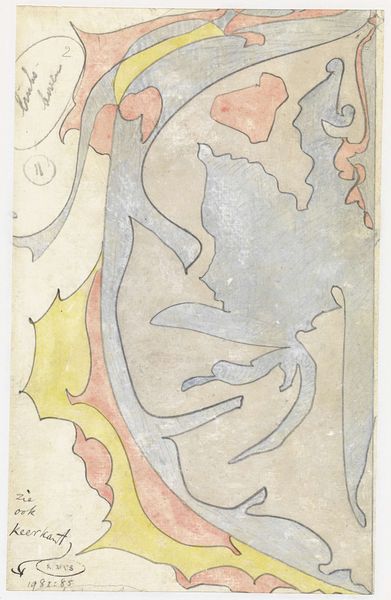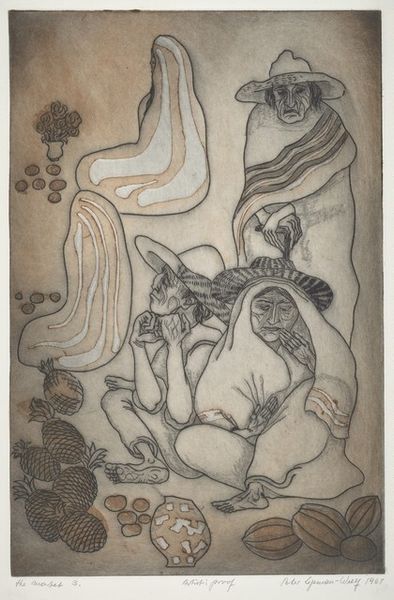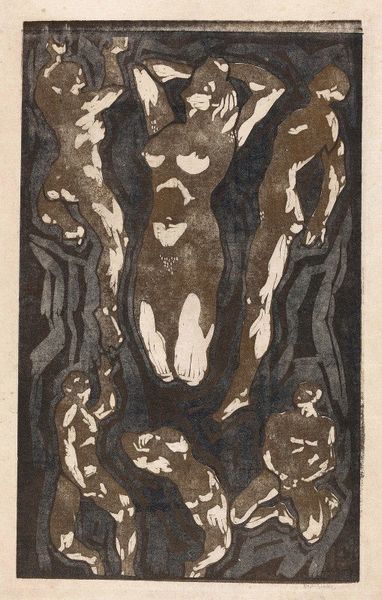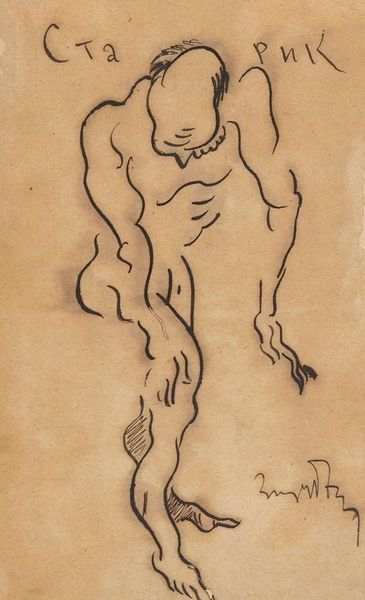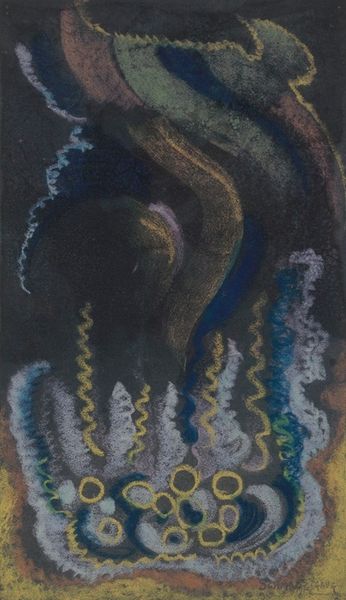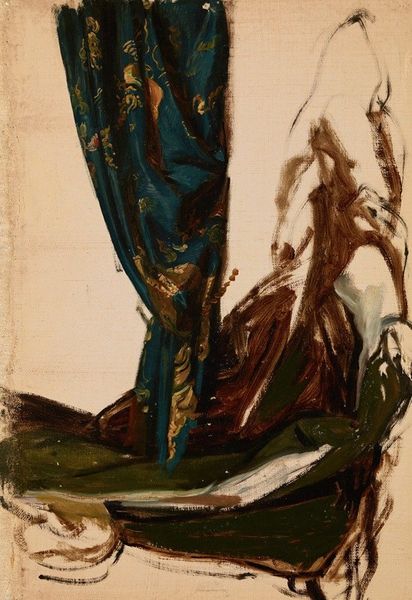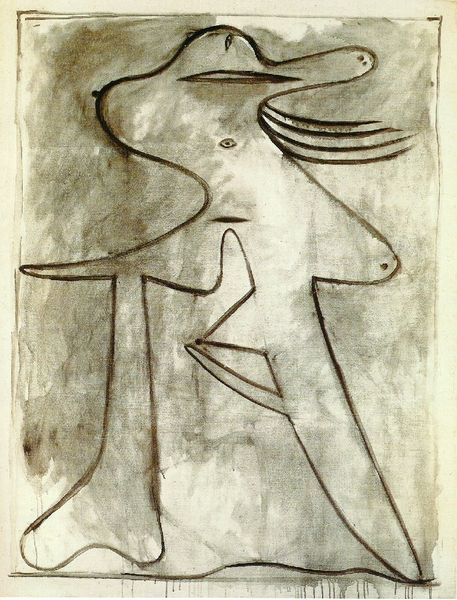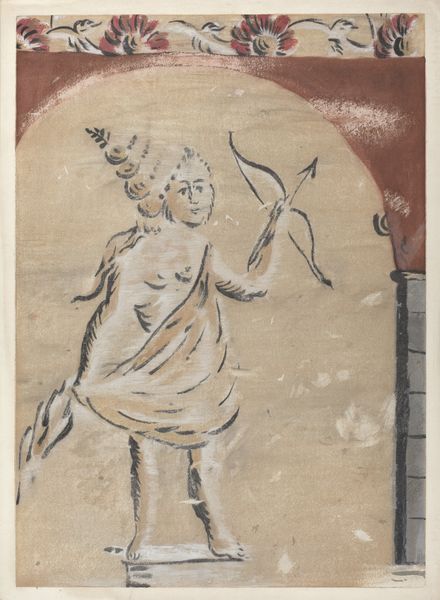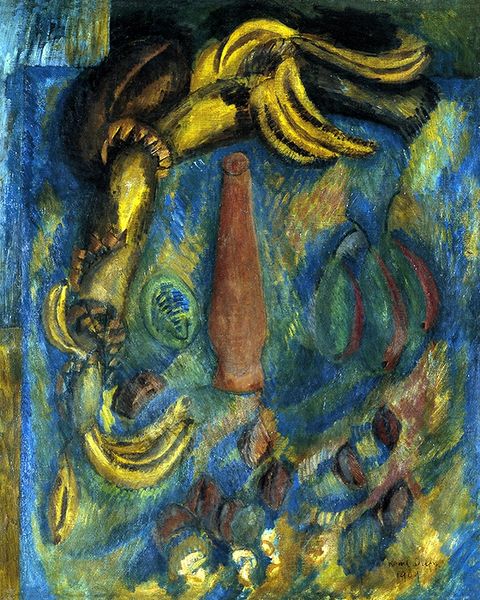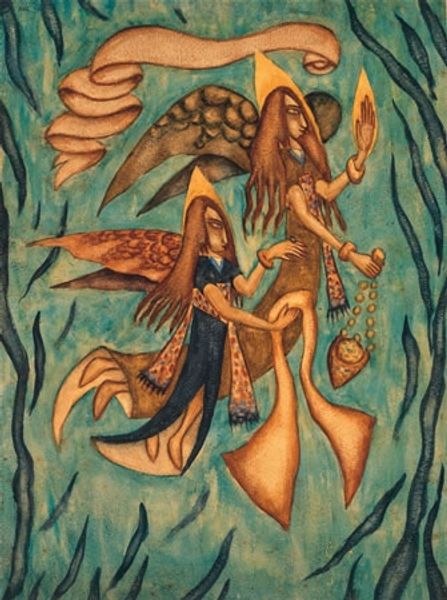
painting, watercolor
#
portrait
#
painting
#
figuration
#
abstract
#
watercolor
#
expressionism
#
watercolor
Copyright: Public Domain: Artvee
Curator: Welcome. Before us is Zygmunt Waliszewski’s watercolor, “Black Mother,” painted in 1917. Editor: Immediately striking—the imposing central figures, the earthy tones, the…alien form. It's difficult to connect emotionally with this scene, at least at first glance. Curator: Alien, perhaps. But look at how Waliszewski manipulates the watercolor. It’s not merely representational. The application—thin washes in some areas, denser, layered strokes in others—suggests a real struggle, a laboring process. How does this production reflect the toil of motherhood itself, especially within the socio-political climate of 1917? Editor: An interesting point regarding process. However, the success rests heavily on formal construction. Observe the artist’s bold abstraction: The exaggerated, almost grotesque, figures challenge traditional portraiture. See how the interplay between the dark blue forms of mother and child contrasts against the muddy earth tones, creating tension? Curator: Exactly. And consider the role of the 'blackness' mentioned in the title. Is it a racial designation? A symbolic weight? What materials – specifically, what pigment sources, and labor relations of said pigment production – might contribute to our understanding here? How did wartime constraints perhaps influence the availability of resources, and how might the watercolor medium choice factor? Editor: Setting aside historical speculation for the moment, I must insist on the impact of line and shape. The curves define the maternal figure, yet are distorted. Notice how this formal tension might visualize internal emotionality through abstraction alone? Curator: Granted. But that visual distortion may also represent the societal distortions acting upon women's labor. It could speak to the economic forces altering family structures in that historical context. The materiality brings these realities to life. Editor: True, and this material perspective deepens appreciation of the visual work as a symbol and surface. Curator: Ultimately, understanding production nuances—material limitations, artistic process—offers a more nuanced understanding about visual form and how social context shaped that. Editor: Agreed—by scrutinizing these artistic aspects through an economic and visual lense, a fuller comprehension will emerge.
Comments
No comments
Be the first to comment and join the conversation on the ultimate creative platform.
